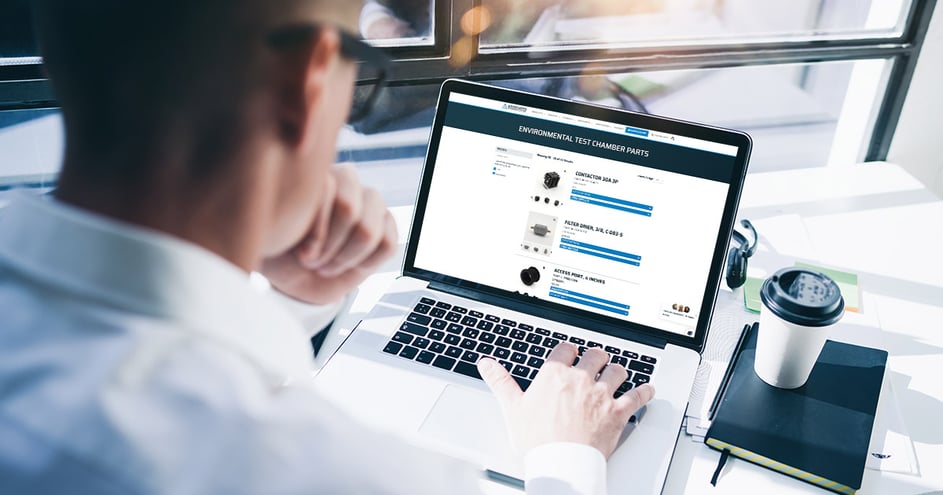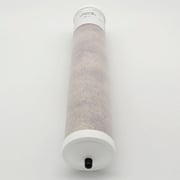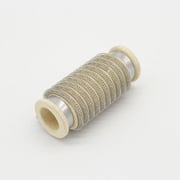Finding Replacement Parts for My Test Chamber

Environmental test chambers are built to last. When you purchase them from a reputable manufacturer, you can expect consistent performance for up to a decade or more—so long as you practice regular preventative maintenance.
A key part of that is identifying parts that show wear and tear and replacing them as needed. Doing so will maximize your chamber investment and enable you to maintain a testing schedule.
Here are some of the most commonly replaced test chamber parts.
Most Common Parts Test Chamber Users Replace
The importance of staying ahead of maintenance can’t be overstated. Delaying your testing schedule can cost you substantially in sales and downtime. If left unaddressed, small issues unaddressed can quickly become big, expensive ones.
Consult your chamber manufacturer to understand what parts tend to wear down before others. Below are some of the most common:
Water Demineralizer Cartridge
Found in both humidity chambers and salt spray chambers, water demineralizer cartridges typically corrode due to consistent and direct exposure to water. Cartridge replacement time depends on what type of water you use. For example, hard water from city hookups tends to wear out cartridges faster than demineralized or single distilled water.
The longevity of your demineralizer cartridges also depends on humidity set point, water usage, and the duration of your testing.
Naturally, the wear and tear will vary from customer to customer. It’s best practice to examine your water demineralizer cartridges every two weeks to ensure they’re fully functioning and in good shape. Make note of the coloring: when more than three-quarters of the cartridge fade from a gray or salt and pepper shade to light beige, it’s time to replace your cartridge.
Silicone Sponge Gasket
Designed for sealing closures, silicone sponge gaskets ensure the workspace remains impervious throughout testing. They are essential to keeping temperatures and moisture contained within the chamber.
Due to frequent compression and expansion when test chamber doors are opened, silicone sponge gaskets wear down over time. Inspect them every few weeks to be certain they’re still performing optimally.
Nichrome Wire Ceramic Heater
As with any heating element, nichrome wire ceramic heaters can burn out or become misshapen over time. It’s best to inspect them every few weeks to ensure they function properly.
|
Water Demineralizer Cartridge |
Silicone Sponge Gasket |
Nichrome Wire Ceramic Heater |
| Search All AES Replacement parts |
||
Preventative Test Chamber Maintenance Key to Identifying Repair Needs
It’s one thing to know what parts you may need to repair eventually, but how can you identify problems in the present?
Part of it is practicing routine maintenance. Establish a service plan, conduct quarterly and annual maintenance inspections, run chambers to evaluate performance prior to testing, and keep manuals and all vital information next to test chambers at all times, always available for technicians and engineers to reference.
Keep in mind that test chambers are connected to live voltage. Any maintenance work should be performed by a professional. Ensure the chamber is disconnected from power following the appropriate lockout-tagout process before performing any inspections or maintenance.
Inspect your electrical system for any loose connections, wires, sensor clips, and compressor connections. Ensure all control switches and lights work. Check amperage readings.
Examine the refrigeration system, including fan operations, oil levels, pipe supports and insulation, and cap tubes. Look for any signs of leakage and frost buildup.
Check the humidity system for any leaks. Confirm the water pressure is correct and drain, clean, and flush the water reservoir, steam generator, and all water lines. Don’t forget to inspect the dry air purge, water tubing and connections, and optional air drier, as well.
Look at the circulation system, including the pump and connecting lines, and remove any lingering sediment.
Lastly, investigate the control system, arguably the most temperamental component of a test chamber. Update the system and look for any bugs that need fixing. Analyze the alarm log for any notifications and consider software and hardware updates as newer models become available.
And don’t forget to calibrate your test chambers and controllers every six months to a year.
If your service team encounters a challenging maintenance issue or your test chamber isn’t performing as expected, don’t hesitate to connect with your manufacturer for maintenance service. The time you spend monitoring and maintaining your chambers is money saved—preempting issues that can worsen over time if left unchecked.




